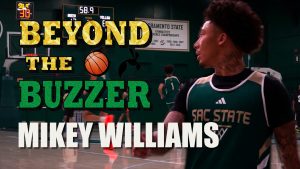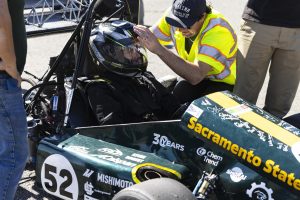Movie Review: Oldies a better choice
October 17, 2008
The 1930s through the 1950s was a time in the film industry known as “The Golden Age of Hollywood.”
Back then, movies did not have a special effects department. There was no such thing as high definition and many of the movies were in black and white. If movies did have special effects, it was most likely something most college students can accomplish on their own computers today. A good movie was driven by a good plot and not by how many things got blown up in one take.
A romantic story was, in the words of Haley Mills, “Boy meets girl, they have problems which aren’t too weird, they fall in love and live happily ever after.” They did not need to hop into bed after the first glass of wine.
So what changed?
“In the ’60s, political change and? the search for the ‘American Identity’ changed how film-makers viewed film-making,” Roberto D. Pomo, a film studies professor, said.
And believe it or not, there are those who do enjoy at least one film from this time period.
“My favorite’s “To Catch a Thief.” The filming location, Cary Grant, the plot – I love everything about it,” interior design major Emma Salisbury said.
“(With classics) I enjoy the studios’ emphasis on general film noir. It was an opposition to the big epic films. They were constrained, had a minimal budget ? and showed the American dream as a dark corner,” Pomo said.
Am I trying to say that today’s movies are trash? Of course not. But I do believe that there are films from America’s past that today’s audience that should not dismiss just because they aren’t in color. Here’s a few of the greatest classics (pre-1960) of their genre.
Romantic Comedy:
“It Happened One Night” (1933) – Clark Gable, Claudette Colbert. Known as Hollywood’s first “screwball comedies,” a rebellious young heiress (Colbert) runs away to meet her husband in New York, only to run into a wise-cracking reporter (Gable). The characters are hilarious and while the plot is a bit far-fetched, that’s what makes it so great.
“The Philadelphia Story” (1940) – Cary Grant, Jimmy Stewart, Katherine Hepburn. One of the most famous love triangles, a few days before Tracy Lord (Hepburn) is supposed to be married, her house is invaded by her ex-husband (Grant), and a writer (Stewart) is assigned to cover the wedding. Stewart won a deserving Academy Award for his role.
Other recommendations: “The Apartment,” “Shop Around the Corner,” “His Girl Friday”
Epics:
“Casablanca” (1942) – Humphrey Bogart, Ingrid Bergman, Paul Henreid. Set in unoccupied Africa during the early days of World War II, an American nightclub owner (Bogart) meets a former lover (Bergman), with unforeseen complications. You might have heard its most famous line, “Here’s looking at you, kid.”
“Ben-Hur” (1959) – Charles Heston, Stephen Boyd. A Jewish prince (Charles Heston) is betrayed and sent into slavery by a Roman friend (Stephen Boyd), and he tries to regain his freedom so he may get revenge.
Other Recommendations: “Gone With the Wind,” “All’s Quiet on the Western Front,” “Spartacus”
Mystery:
“Rear Window” (1954) – Jimmy Stewart, Grace Kelly. A wheelchair bound photographer (Stewart) spies on his neighbors from his apartment window and becomes convinced one of them has committed murder.
In this Hitchcock mystery, Stewart plays a very different character than his earlier romantic gems, but is still the ‘Average Joe’ you cheer for. Kelly, who plays Stewart’s on-screen girlfriend, is as elegant as ever the moment she walks onto the scene.
“The Maltese Falcon” (1941) – Humphrey Bogart, Mary Astor. A private detective (Bogart) takes on a case that involves him with three eccentric criminals, a gorgeous liar (Astor), and their quest for a priceless statuette.
One of the most well-known “film noir” of the Golden Age, One could believe that no one plays a cynical investigator like Bogart.
Other recommendations: “Vertigo,” “The Big Sleep,” “Citizen Kane”
Musicals:
“Singin’ in the Rain” (1952) – Gene Kelly, Donald O’Connor, Debbie Reynolds. An actor (Kelly) falls in love with a young girl (Reynolds) just as his production company makes the transition from silent films to ‘talkies.
The American Film Institute listed this film as the number one musical, and it’s not surprising. The songs are catchy, including the well-known title song, and the choreography is amazing. And I have yet to meet anyone who didn’t laugh during O’Connor’s ‘Make ‘Em Laugh’ scene.
Other recommendations: “7 Brides for 7 Brothers,” “An American in Paris,” “Meet Me in St. Louis” “The Wizard of Oz”
Kyrie Eberhart can be reached at [email protected]






















































































































